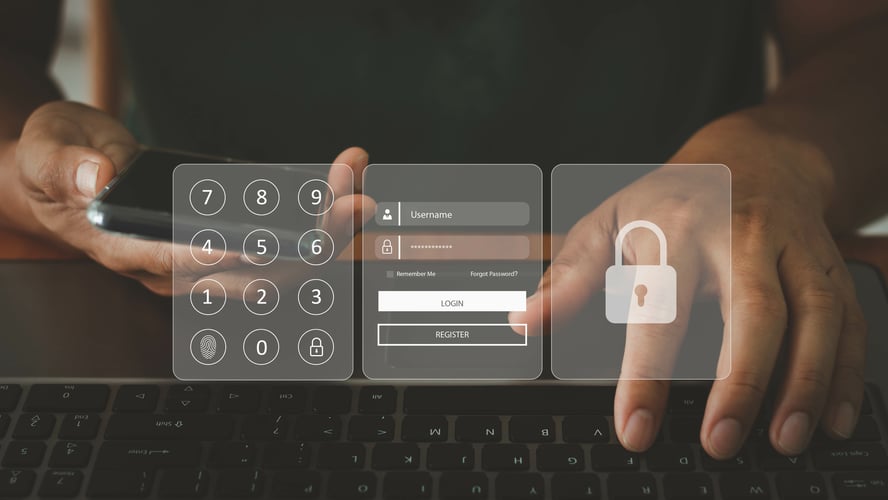More and more the word, securitization, is getting passed around in financial circles. It’s being hailed as a panacea for a lack of cash flow. But what is securitization? And can it truly help your loan software?
In this article we are going to discuss what securitization is, the key parties involved, and the advantages gained from using securitization. Let’s get started.
 What is Securitization?
What is Securitization?
Technically, securitization is the structured process whereby interests in loans and other receivables are packaged, underwritten, and sold in the form of asset-backed securities. Basically, it is the ability to bundle a group of loans into securities that can be sold to investors.
This allows loan originators to transfer some of the risks of loan ownership to investors while giving the originators access to broader funding sources at more favorable rates.
The securities involved in securitization are split into tranches, where the assets share similar qualities (e.g., loan classification, interest rate, etc.). This causes different tranches to carry distinct risks and exposure within an investment portfolio.
Tranches offer investors diversity. Some come with greater risk and the opportunity for greater reward while others are safer and offer more reliable, though lesser returns. Tranches enable investors to select the appropriate risk level to generate an acceptable amount of cash flow.
This is a pretty good overview but to really get a good grasp on securitization, you need to understand the players.
8 Key Parties Involved with Securitization
- Borrower: The Borrower is responsible for making the payments on the loan. Securitization is typically imperceptible to this party, but they play a key role by making the principal and interest payments that transfer to the investor. The Originator and the Servicer have a direct relationship with the Borrower.
- Originator: The Originator, or lending institution, generates the loans that become securitized.
- Servicer: The Servicer provides the tools and resources to collect payments on the loans. Typically, the Originator also services the loans. In return for managing the account, the Servicer earns compensation through fees.
- Trustee: The Trustee is a third-party entity, typically a trust, that holds the underlying assets, acts as a fiduciary, and helps protect the interests of the investors. The Trustee receives regular financial information from the Originator and Servicer on the Special Purpose Vehicle (SPV).
- Credit Enhancer: The Credit Enhancer can help offset the loss from defaulted assets. This can be done through subordination, which prioritizes the order in which loan losses are allocated, or via overcollateralization, where the face value of the loan pool is larger than the value issued.
- Rating Agency: The Rating Agency determines the level of ability the SPV has in generating interest and principal. They appraise the risk of the SPV and the ability to repay. There are three main rating agencies:
- Standard & Poor’s
- Moody’s Investor Services
- Fitch Ratings
- Underwriter: The Underwriter analyzes investor demand and designs the structure of the security tranches accordingly.
- Investor: The Investor is the party who purchases the SPV based on their risk tolerance. The tranches allow the investor to diversify their portfolio.

10-Step Securitization Process
Securitization involves multiple parties and several steps. Here is a summary of the steps involved.
- Asset Origination: The process begins when the Originator issues a loan (mortgage, auto, line-of-credit, etc.) to a Borrower.
- Create Pool of Loans: The Originator/Servicer selects a pool of loans with similar characteristics (e.g., loan classification, interest rate, maturity, etc.). This pool of loans will serve as collateral.
- Create the Special Purpose Vehicle (SPV): The Originator/Servicer establishes a separate legal entity called an SPV. The SPV is designed to be bankruptcy remote, meaning that if the Originator/Servicer goes bankrupt, the assets held by the SPV aren’t affected.
- Transfer the Pool of Loans: The Originator/Servicer sells the pool of loans to the Trustee/SPV, which removes the assets from the balance sheet. In return, the Trustee/SPV pays the Originator/Servicer for the assets.
- Tranches: The Trustee/SPV divides the pool of loans into different risk classes, known as tranches. Each tranche has a different level of risk and return to cater to different investors. Tranches are typically divided into senior, mezzanine, and junior categories.
- Enhancement: The Trustee/SPV may use a Credit Enhancer to make the securities more attractive to investors. This can be done using various credit enhancement techniques, such as over-collateralization, reserve accounts, or third-party guarantees.
- Rating: The Trustee/SPV hires credit rating agencies to assess each tranche. A Rating Agency assigns a rating to a tranche based on the perceived risk, with the senior tranches receiving the highest ratings and junior tranches the lowest.
- Selling: The securities, backed by a pool of loans, are sold to investors via investment banks. An Investor can invest in various tranches based on the Investor’s risk tolerance and investment goals.
- Distribution of Cash Flow: The loan Servicer collects a payment from the Borrower and distributes the cash flow to the Investor, according to the terms of the securities.
- Reporting: The Servicer monitors the performance of the loans tied to securities and provides regular reports to the investors.
 Benefits of Loan Software with Securitization
Benefits of Loan Software with Securitization
Now that we understand securitization better, let’s finally answer the question, “Can securitization truly help your financial institution?” And the answer is yes. Securitization can help financial institutions in several ways. Here are several of the major benefits of securitization.
Reduces Risk
Securitization enables financial institutions to transfer some of the risks of loan ownership (e.g., early repayment, default, etc.) to investors who are more willing or able to manage them. Selling the loan to an investor reduces liability while still allowing the institution to service the loan.
Access Funding
Securitization also enables financial institutions to access the funding markets at debt ratings higher than corporate ratings. This generally provides access to broader funding sources at more favorable rates. This funding can then be used to run the day-to-day operations and to grow.
Reduce Costs
By removing assets and supporting debt from balance sheets, financial institutions can save on some of the costs of on-balance-sheet financing while managing potential asset-liability mismatches and credit concentrations.
Fee Income
When accounts are moved off the balance sheet, the interest income for those accounts is converted to fee income for the loan servicer. Securitization reduces costs and creates fee income.
Lower Capital Requirements
Some entities, due to legal or regulatory requirements, need to limit their amount of capital. Securitization can be used to move assets off the balance sheet. If federal regulators increase the amount of capital an institution is required to hold in case of loss, securitization will allow these institutions to invest their capital to increase their returns instead of holding onto it.
Access Inexpensive Capital
Securitization can make funds available to run operations through assets that would have taken years to generate cash flow. This is especially important in an environment where capital is increasingly difficult to secure through traditional lending options. Plus, institutions can avoid paying higher borrowing rates on capital that is tied up for a long time.
Increased Credit Rating
Removing receivables off the balance sheet may help raise an institution’s credit rating, thus allowing it to borrow funds at a lower rate. An institution that is rated BB but uses securitization to maintain assets that are extremely high in quality (AAA or AA) can borrow at significantly lower rates because they can use the high-quality assets as collateral. In addition, the institution is transferring the potential risk of default to investors. If an institution needs to boost their credit rating to secure better funding options, securitization can be a viable solution. It can provide access to better funding options in the present and in the future.
Strengthen Customer Relationships
The best thing about securitization is that it enables financial institutions to maintain customer relationships and strengthen them. Institutions can remove assets from the balance sheet but continue to service the debt. Selling the loan to an investor reduces the liability to the financial institution, but the connection with the customer remains strong.
While financial institutions definitely benefit from securitization, investors and borrowers also profit. Investors enjoy a greater chance of having a higher rate of return on revenue-generating assets while gaining access to high-quality assets they normally couldn’t invest in. And borrowers benefit from the increasing availability of credit on terms that lenders may not have been able to provide without securitization.
Securitization and GOLDPoint Systems
Want to learn more about how your financial institution can begin using securitization to access funding, optimize capital, and reduce credit risk? GOLDPoint Systems can help. Learn more about securitization on our website or sign up for a free demo to see what securitization can do for you.
“Growth is never by mere chance; it is the result of forces working together.”
James Cash Penney




